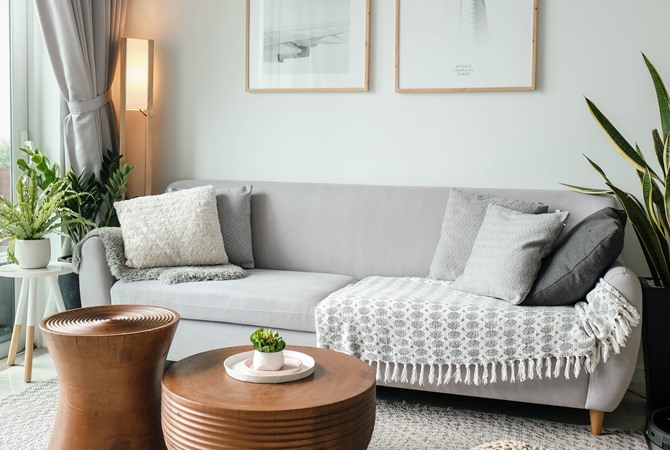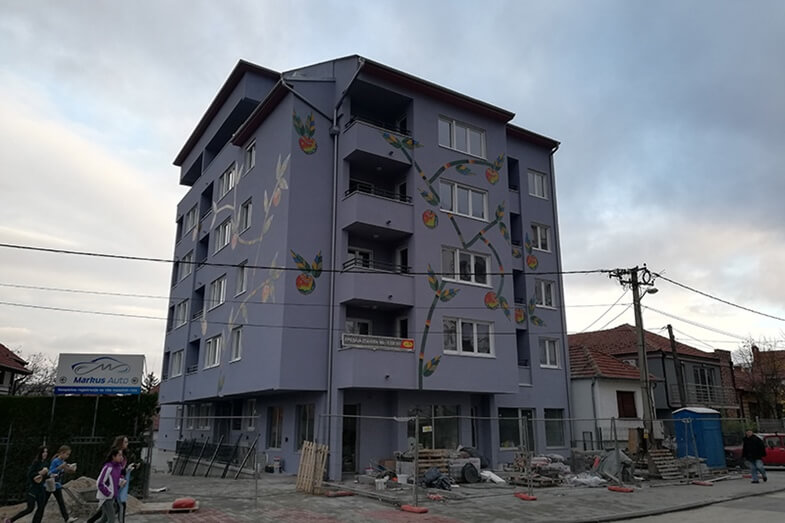
Najefikasnije rešenje za spoljašnju i unutrašnju izolaciju cele zgrade ili njenih delova koji su u kontaktu sa zemljom jeste upotreba takozvane izolacije perimetra.
Radi se o spoljnoj, kontinuiranoj izolaciji bez toplotnih mostova koji se koriste za pregradne zidove koji su u direktnom kontaktu sa zemljom.
Pre početka postavljanja termo izolacije neophodno je da se upoznate sa određenim činjenicama koje su bitne kako bi izolacioni materijal bio adekvatno postavljen.
Vrste spoljašnje izolacije i najbolji materijali za izolaciju
Postoji više sistema termoizolacije. Gruba podela je da rešenja za spoljašnju i unutrašnju termoizolaciju delimo na kontaktne i bezkontaktne.
Bezokontaktni sistemi termoizolacije se koriste kod velikih i industrijskih objekata, dok se kontaktni sistemi ili Demit fasade koriste za stambene objekte.
Spoljašnja termoizolacija podrazumeva postavljanje termoizolacionih panela na spoljašnje zidove. Česta je kod izolacije novih zgrada i kuća ili kada se renovraju postojeći objekti.
Ukoliko u svojoj kući primećujete neke od sledećih problema:
- Hladnoću u prostoriji iako je zagrevate;
- Brzo hlađenje prostorija nakon prestanka grejanja;
- Pojava buđi, vlage, kondenzacije i gljivica,
…Onda je vreme da započnete ugradnju termofasade. Kao stručnjaci, za to savetujemo kontaktnu fasadu.
Kontaktna fasada je najčešći tip toplotne zaštite. Izolacija se pričvršćuje direktno na zid objekta, sa spoljašnje strane.
Osim što osiguravaju zaštitu od vremenskih uticaja, one mogu doprineti i trajnosti samog zida. Najčešće se preporučuje kamena vuna, zbog svih prednosti koje pruža. Hajde da vidimo koji se to još materijali koriste za termoizolaciju.
Koji materijali se koriste za termoizolaciju?
Termoizolacioni materijali spadaju u red sintetičkih i mineralnih materijala. Kao najpoznatiji sintetički izdvajaju se stiropor i stirodur.
Stirodur je gušći i teži u odnosu na stiropor jer je u njega utisnuta veća količina vazduha između kuglica poliuretana.
Mineralni materijali za termoizolaciju su mineralne vune koje mogu biti kamene, staklene ili drvene.
Staklena ili kamena mineralna vuna su izolacioni materijali koji se prave od stakla ili kamena – dakle potpuno prirodnih sirovina.
Vuna je trajna i nepromenljiva. Ona u odnosu na stiropor nije zapaljiva i poseduje dobre karakteristike kada je u pitanju zvučna i toplotna izolacija, jer omogućava zidovima da “dišu”.
U čemu je kamena vuna još bolja od stiropora?
Kao što smo reklim, mineralna vuna, bilo da je staklena ili kamena, dobija se od prirodnih sirovina, iz kamena ili stakla.
Sastoji se od niza isprepletanih vlakana (kod kamene vune kraćih, kod staklene malo dužih), koja omogućavaju ‘zarobljavanje’ velike količine vazduha unutar samih proizvoda.
A znamo da je sam vazduh zapravo najbolji izolator!
Svojstva kamene vune su trajna i ne menjaju se kroz vreme. Dobar je zvučni izolator, a fasade sa kamenom vunom se tretiraju i klasifikuju kao negorivi fasadni sistemi.

Paropropusna je i omogućava zidovima da “dišu”
Zidovi sa vunom “dišu“, tj. omogućavaju pari iz unutrašnjeg prostora da izađe napolje, što je veoma bitna prednost u odnosu na ostale tipove termoizolacionih materijala.
Na primer, stiropor pruža oko 30 do 40 puta veći otpor prolasku vodene pare nego kamena vuna. Prolaz vodene pare je neophodan da se ne bi stvarala kondenzacija i buđ u unutrašnjosti.
Izuzetno je trajan termoilozacioni materijal
Kako kamena vuna potiče od kamena, zagarantovana je njena trajnost i nepromenljivost karakteristika, kroz duži vremenski period – i to bez obzira na spoljašnju temeperaturu.
Dakle, ovo rešenje za termoizolaciju kuće trajaće vam koliko i sama kuća!
Negorivost kamene vune je dobro poznata
Kamena vuna kao rešenje za spoljašnju termoizolaciju se smatra negorivim sistemom, jer ne doprinosi širenju požara. Na ovaj način štitimo živote, imovinu i sredinu.
Kako odabrati materijal za unutrašnju i spoljašnju izolaciju?
Kod izbora materijala za termoizolaciju potrebno je sagledati više bitnih faktora. Na izbor materijala utiču klimatski uslovi područja, kao i mikro klima u kojoj se objekat nalazi.
Osim što termoizolacija služi da zaštiti od hladnoće, odnosno, toplote, ona ima i druge svrhe. O njima takođe moramo voditi računa prilikom izbora materijala.
Potrebno je da materijal dobro propuštaju paru i da omogućava da prostor diše. To znači da vlaga nesmetano izlazi.
Termoizolacioni materijali će nas štititi i od požara. Dakle treba birati one materijale koji nisu zapaljivi, ili koji brzo sprečavaju širenje plamena.
Kod izbora termoizolacionog materijala je bitan njegov kvalitet i dugotrajnost. Tu su i otpornost na vlagu, neotpuštanje hemikalija i otpornost na insekte.
Pored svih ovih svojstava, termoizolacioni materijal bi trebalo i da su dobar izolator zvuka, kako bi štitili od spoljne buke ili buke između prostorija.
Zašto se postavlja toplotna izolacija?
Termoizolaciona rešenja su nezabolazna ukoliko se bavite gradnjom ili želite da vaši stanovi i kuće budu prijatno topli tokom svih meseci u godini.
Osim toga, postavljanjem izolacije uštedite mnogo novca na struju, grejanje, rashlađivanje, saniranje štete zbog buđi, i dr. Samim tim štedite i više živaca.
Termoizolacija u kompleksima koje je izgradio GRADING obezbeđuje optimalnu temperaturu u svim prostorijama, trajnu zaštitu od vlage, i naravno, energetsku efikasnost.
Kvalitetnom toplotnom izolacijom smo u velikoj meri smanjili toplotne gubitke tokom zime, a leti sprečili pregrevanje.
U stanovima se neće pojaviti vlaga, nikakva kondenzacija i buđ, i svi ukućani će disati čist vazduh!
Naši objekti su i dugotrajni, jer dobra termoizolacija utiče na dugotrajnost objekta i mehanički ga štiti.
Možda vam postavljanje spoljašnje i unutrašnje izolacije deluje naporno ili komplikovano, verujte nam, ulaganje u svoj dom i posledično zdravlje porodice je najbolja investicija koju biste ikada mogli započeti.
Zato je tu Gradning, da vam olakša u svemu vezanom za život u stambenoj zgradi, ili kući. Od ideja za uređenje enterijera, savetima za kupivinu stana i zanimljivim tekstovima poput onog koji vam pokazuje kako funkcioniše život u stambenoj zajendici. Ne oklevajte da nas kontaktirate!





